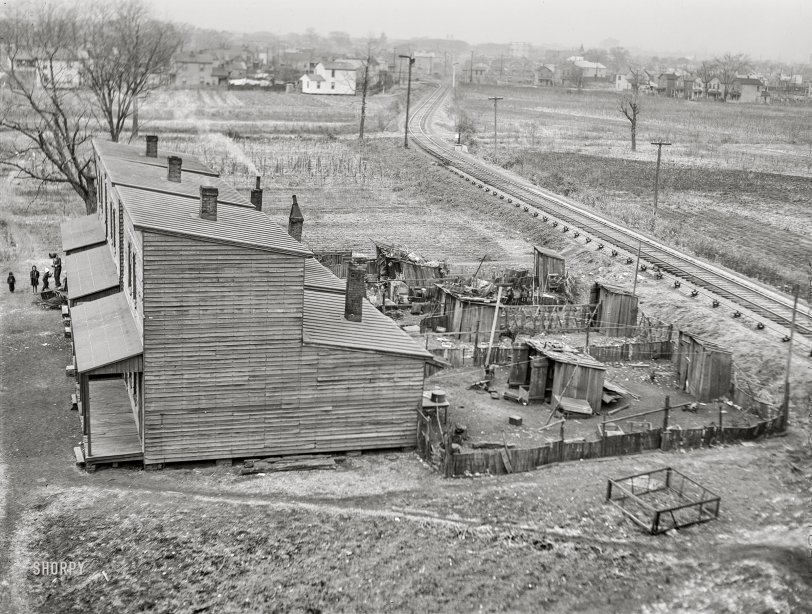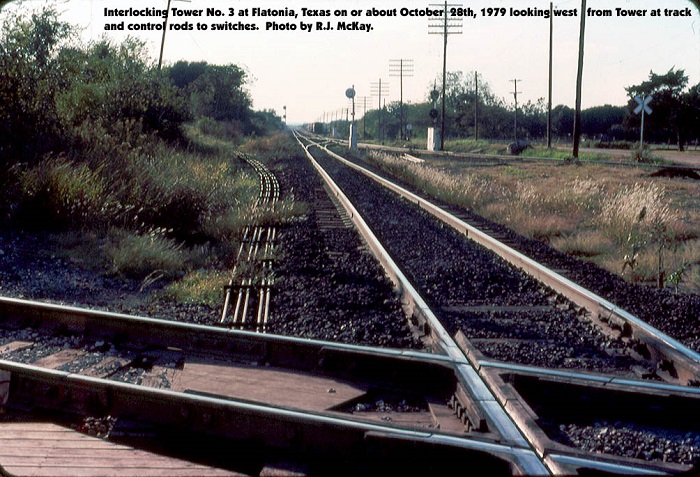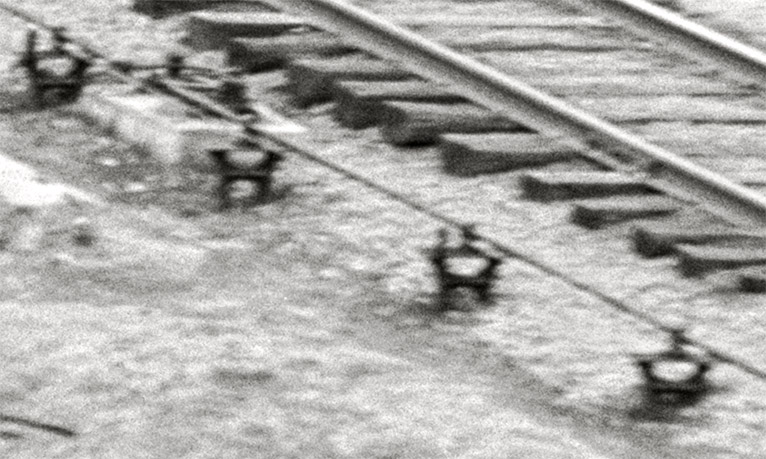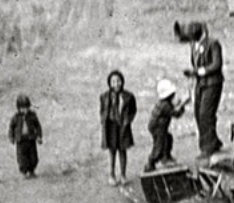


Framed or unframed, desk size to sofa size, printed by us in Arizona and Alabama since 2007. Explore now.
Shorpy is funded by you. Patreon contributors get an ad-free experience.
Learn more.

- Lofty addition
- In 1912
- Keenan Building
- Six years old
- Taken from the P.J. McArdle Roadway?
- It stood only 47 years
- Three track mind
- Incline to the right
- Reach for the sky, 1912 style
- No clean sweep
- Same Job Title, Same Face
- Sadly Lost
- Beautiful ...
- Where you get your kicks
- Aim High
- Pueblo Revival sisters
- Pueblo Neoclassicism
- Milk Man
- Regional dialect.
- Spielberg's inspiration
- Great Photo
- Loaf Story
- Do you still have the Rakes category?
- Could almost be a scene from the 1957 movie 'Hell Drivers'
- The Wages of Fear.
- Conspicuous by their absence
- Got Milk?
- All that aluminum
- No lefties
- Smoke 'em if you've got 'em
Print Emporium
Track Shacks: 1941

March 1941. "Overcrowded Navy towns -- housing in Norfolk, Virginia." Medium format acetate negative by John Vachon for the Farm Security Administration. View full size.
What's at the other end of the rods --
can be seen here.
Rods from Tower . . .
The objects being discussed appear to be a control rod and supports that run to a flop derail and signal governing it. There seems to be another crossing and tower in the distance, but this rod must run to a tower behind and to the right of the photographer. The attached photo has a more complex arrangement that controls several switches, etc.

Objects along track
bobstothfang asked about the above. This is not a cable or conduit, exactly, but a pipeline - that is, a pipe which mechanically operated the signal just this side of the grade crossing. In this instance, it also operated a derail (a device to intentionally derail a train). If the signal were at "Stop" (as seen in the photo), the derail would cause a train passing the signal to come off the track before it could cause an accident (probably a more serious accident) out of the picture to the right.
I'm with bobstothfang
"Well duh, of course", "I knew that".
I think it is a control for a switch or a signal.
Railroads in times past used a rod set on rollers or bearings (as shown here) with a push-rod and a pull-rod to move the signal indications. This was controlled by a lever in a signal tower by a "lever-man".
Rodding and cable
The iron chairs next to the track are carrying two control functions. The thick "rodding" is iron pipe rigid enough to provide push-pull control against stiff mechanical resistance. It is supported both top and bottom by concave rollers in the chair castings. Behind the outhouses (the picture below) is a pair of bell cranks that compensate for thermal expansion, converting "pull" into "push" and vice versa. They are located precisely at the center of the pipe run.
Near the signal, the pipe rodding changes direction via a bell crank to operate a derail, to enforce a stop indication before a train plows through the track crossing at the junction ahead, or more likely another junction behind the camera. By US convention, the nearer semaphore is facing away, controlling movements toward the camera, and the further white mast signal controls movements toward the crossing. ie, signals were located on the engineer's side.
The chairs and bell cranks are mounted on heavy concrete blocks that extend well below the ground surface for rigidity.
Somewhere behind and to the right of the camera is a manned "armstrong" signal tower that operates the derail and semaphore via very large levers. Probably another junction or passing siding. The photographer may have climbed a signal mast guarding the nearer junction.
Next to the pipe is a thin tension cable that operates the semaphore, similar to European practice.
As a teenager, I used to hang out at an armstrong tower in our town, and have one of the support rollers from when it was torn down.
John Vachon
An informative and interesting article about Mr. Vachon from American Heritage magazine, February 1989.
Objects along the track
From the close-up, I suspect not a cable or conduit, but a rigid push-pull rod to the semaphore. Simple mechanical interfaces worked well!
A bad guess
Without the date & photographer identified in the caption, I might have guessed: Mathew Brady, 1861. If I knew what the gizmos along the track were, and their history, I may have made a better estimate.
Objects along the track
What are the objects spaced along the near edge of the tracks? I'm sure that when someone answers the question I will say "Well duh, of course" or a sarcastic "I knew that".
[It's a cable or conduit leading to the semaphore on the curve. - Dave]

Obstacle course
Midnight trips to the privy must have been a challenge.
Of course they may have kept a 'thunder mug' (as my grandpa called it) in the house so going out wasn't necessary.
Umm what?
Is this a man with a bucket for a face attacking children?

Poor Side of Town
From the view of the overall picture this is the wrong side of the tracks. The trip to outhouse was an adventure in the making.
Vachon's preparedness assignment
The recent spate of John Vachon's photos from 1940 and 1941, relating to military and similar construction and environments, points to something little-realized today: American involvement in World War II did not start with Pearl Harbor. Increasingly through the two years, the Roosevelt administration pushed preparedness, and did what it could to aid Britain and others fighting the Nazis. All against strenuous opposition from America-first isolationists. (Sympathizers with that movement included not just Charles Lindbergh but John F. Kennedy and Gerald Ford.)
Vachon was still working for the Farm Security Administration in 1941, and it would be interesting to know more about the background of this large-scale assignment documenting people and places being transformed by preparedness.
Shanty shenanigans
I see wide open (if perhaps squalid) rural living! Maybe this little shanty trio is the result of overcrowding elsewhere. Or maybe there are 10 families living here. Or maybe the title comes from a series of photos containing other more representative examples.
Whatever the case, for me this photo begs two far more important questions:
What is the vantage point from which it was taken? It resembles a modern drone shot. I know that balloons were used in this era, but that seems like an unlikely effort to put forth for a shot like this.
Secondly, and most importantly, is the kid beating the man about the face with a rusty bucket on a stick?
What's all this then?
Can the items behind the homes, near the tracks be torches to designate the fact there's a curve? Or for some other reason, there's around 20 of them that continue until the photo goes out of frame.
This image has me wondering
First, I wonder what those things along the edge of the track roadbed are. I don't recall ever seeing anything like those before.
Second, it appears one of these shacks has a garden area behind it, rather than privies and sheds. I wonder if the privies were remnants of an earlier time and the shacks had indoor plumbing in 1941. I also wonder if tenants in the shacks with clutter behind them paid less rent than the one who could look out on the garden.
























On Shorpy:
Today’s Top 5